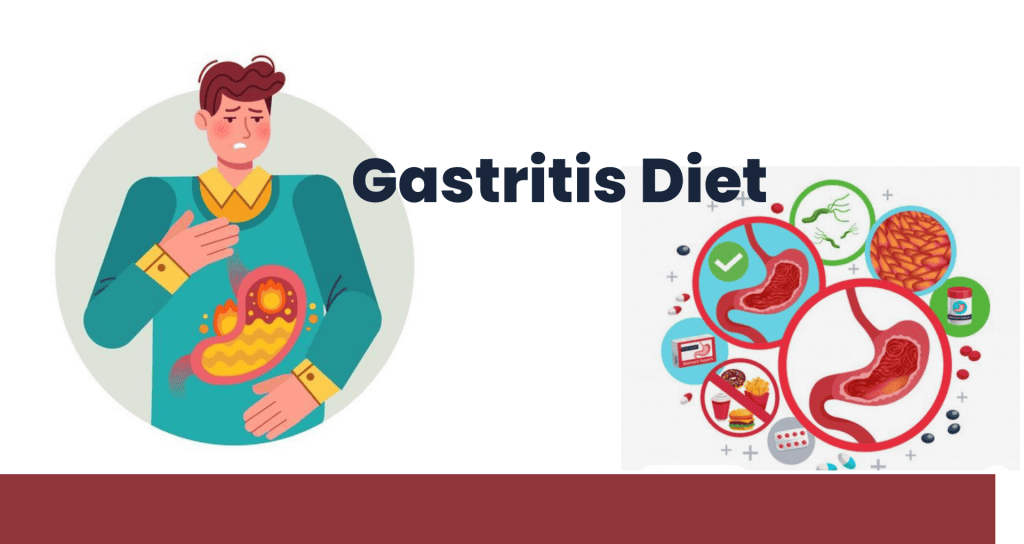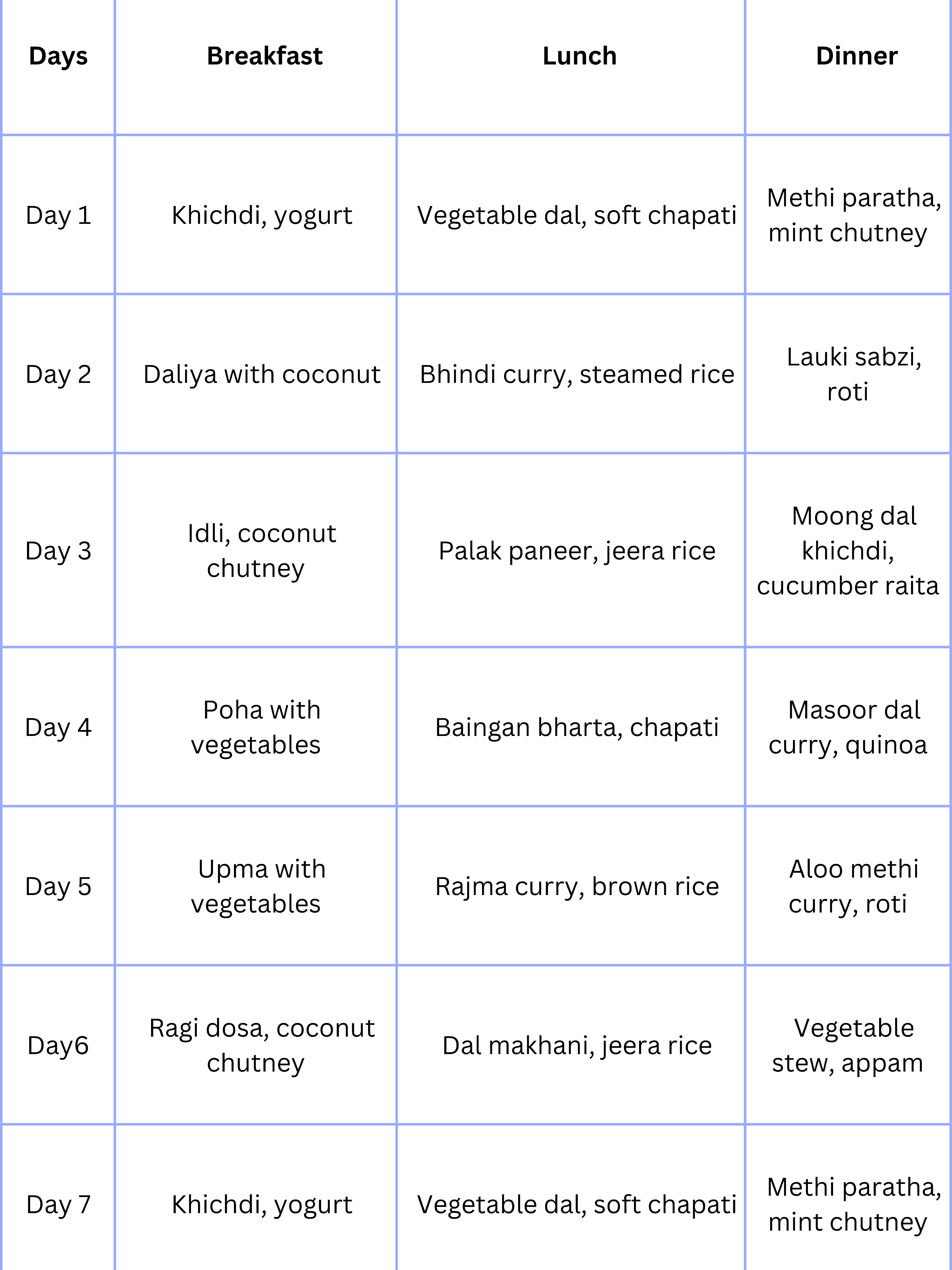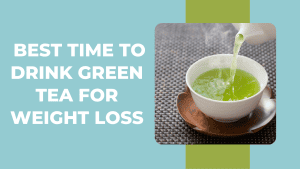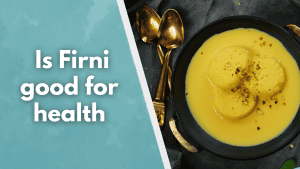A gastritis diet is tailored to alleviate symptoms and promote healing in individuals with gastritis, an inflammation of the stomach lining. This diet focuses on soothing and nourishing the stomach while avoiding irritants that can exacerbate gastritis symptoms. Following a gastritis diet can bring numerous benefits, including reduced stomach inflammation, relief from discomfort, and support in preventing complications. It typically involves choosing easily digestible, low-acid food for gastric that don’t stimulate excess stomach acid production. Incorporating lifestyle changes and mindful eating habits also play a crucial role in managing gastritis. Understanding what to include and exclude from the diet is essential for individuals seeking relief from gastritis symptoms and fostering stomach health.
What is a Gastritis Diet?
A gastritis diet is a specialized eating plan to manage and alleviate symptoms of gastritis and inflammation of the stomach lining. This diet revolves around selecting gentle food for gastric which minimizing irritation and promoting healing. Typically, it involves avoiding or limiting certain foods that can trigger or worsen gastritis symptoms, such as spicy or acidic foods, caffeine, and alcohol. Instead, emphasis is placed on incorporating easily digestible and nutrient-rich options, including lean proteins, fruits, vegetables, and whole grains. The goal is to reduce stomach inflammation, alleviate discomfort, and support healing the gastric mucosa. Adopting a gastritis diet often involves making lifestyle changes, such as eating smaller, more frequent meals, staying hydrated, and avoiding excessive consumption of certain substances. Consulting with a healthcare professional or a registered dietitian is recommended for personalized guidance in managing gastritis through dietary adjustments.
Health Benefits of Gastritis Diet
A gastritis diet offers a range of health benefits by relieving symptoms and promoting healing in individuals with stomach inflammation. This specialized eating plan focuses on soothing the digestive system and minimizing irritation, contributing to overall gastric well-being.
Benefits of Following a Gastritis Diet:
- Symptom Relief
- Reduced Inflammation
- Improved Digestion
- Prevention of Complications
- Enhanced Nutrient Absorption
1. Symptom Relief
A gastritis diet relieves symptoms by excluding foods that can aggravate stomach inflammation. By avoiding triggers such as spicy, acidic, or irritating substances, the diet minimizes discomfort associated with gastritis, including bloating, nausea, and abdominal pain. Emphasis on easily digestible and nutrient-rich foods supports a gentler digestive process, reducing the burden on the stomach. Additionally, incorporating small, frequent meals helps maintain stable blood sugar levels and prevents digestive system overload. These dietary adjustments collectively contribute to symptom relief, creating a supportive environment for healing the stomach lining and promoting overall gastric well-being.
2. Reduce Inflammation
A gastritis diet reduces inflammation by excluding foods that trigger or worsen gastric irritation. It avoids spicy, acidic, and irritating substances, minimizing stress on the stomach lining. The emphasis on nutrient-rich, anti-inflammatory foods, such as fruits, vegetables, and whole grains, provides essential vitamins and antioxidants that support the body’s natural healing processes. Additionally, limiting or avoiding alcohol and caffeine helps prevent further inflammation. By adopting these dietary changes, a gastritis diet creates a soothing environment for the stomach, reducing inflammation and fostering the healing of the gastric mucosa.
3. Improve digestion
A gastritis diet aids in improving digestion by emphasizing easily digestible and nutrient-rich foods. Excluding irritating substances reduces stress on the digestive system, minimizing symptoms like bloating and discomfort. Smaller, more frequent meals, a common practice in this diet, prevent stomach overload and promote efficient digestion. Including lean proteins, fruits, vegetables, and whole grains provides essential nutrients that support digestive health. By fostering a balanced and nourishing approach to eating, a gastritis diet eases the digestive process, improving overall digestion and creating a supportive environment for individuals managing gastritis. Well you can read How to increase Metabolism from Livofy to get a better idea on digestion.
4. Prevention of Complications
A gastritis diet aids in preventing complications by minimizing potential triggers that could exacerbate stomach inflammation. The diet reduces the risk of aggravating existing gastritis symptoms by excluding irritating food for gastric and substances. This, in turn, helps prevent complications such as bleeding or the development of stomach ulcers. Focusing on nutrient-rich, easily digestible foods supports the healing process, creating an environment that reduces the likelihood of further complications. Additionally, adopting healthier eating habits and avoiding known triggers contribute to long-term stomach health, minimizing the potential for complications associated with chronic or severe gastritis.
5. Enhanced Nutrient Absorption
A gastritis diet aids in enhanced nutrient absorption by promoting the consumption of easily digestible and nutrient-rich foods. By excluding irritating substances, the diet reduces stress on the digestive system, allowing for more efficient absorption of essential vitamins and minerals. Nutrient-dense food for gastric, such as fruits, vegetables, lean proteins, and whole grains, are necessary for overall health. Adopting a balanced eating pattern with more minor, frequent meals can optimize nutrient uptake. A gastritis diet ensures that the body can effectively utilize essential nutrients for overall well-being by creating a supportive environment for digestion and absorption.
7 Day Meal Plan for Gastritis
A 7 day meal plan for gastritis focuses on incorporating soothing and easily digestible food for gastric to alleviate symptoms like inflammation and discomfort. This 7 day meal plan for gastritis includes a variety of traditional Indian dishes that are gentle on the stomach, rich in nutrients, and known for their anti-inflammatory properties.
7 day meal plan for gastritis:
Day 1:
- Breakfast: Khichdi (rice and lentil porridge) with yoghurt.
- Lunch: Vegetable dal (lentil curry) with soft chapati.
- Dinner: Methi (fenugreek) paratha with mint chutney.
Day 2:
- Breakfast: Daliya (broken wheat porridge) with grated coconut.
- Lunch: Bhindi (okra) curry with steamed rice.
- Dinner: Lauki (bottle gourd) sabzi with roti.
Day 3:
- Breakfast: Idli with coconut chutney.
- Lunch: Palak (spinach) paneer with jeera (cumin) rice.
- Dinner: Moong dal khichdi with a side of cucumber raita.
Day 4:
- Breakfast: Poha (flattened rice) with added vegetables.
- Lunch: Baingan (eggplant) bharta with chapati.
- Dinner: Masoor dal (red lentil) curry with quinoa.
Day 5:
- Breakfast: Upma (semolina porridge) with mixed vegetables.
- Lunch: Rajma (kidney bean) curry with brown rice.
- Dinner: Aloo (potato) methi curry with roti.
Day 6:
- Breakfast: Ragi (finger millet) dosa with coconut chutney.
- Lunch: Dal makhani with jeera rice.
- Dinner: Vegetable stew with appam (rice pancakes).
Day 7:
- Breakfast: Khichdi (rice and lentil porridge) with yoghurt.
- Lunch: Vegetable dal (lentil curry) with soft chapati.
- Dinner: Methi (fenugreek) paratha with mint chutney.
You can follow 7 day meal plan for gastritis patients.
Well you can view the healthy food chart for a better idea
Foods to eat in Gastritis Diet
In a gastritis diet, it’s essential to focus on foods that are gentle on the stomach, non-irritating and can help reduce inflammation. Opting for easily digestible, low-acid, and anti-inflammatory foods is critical. Whole grains, lean proteins, fruits with low acidity, vegetables, and foods rich in probiotics to support gut health are some of the foods to eat with gastritis.
Foods to eat in a Gastritis Diet:
- Oatmeal: This is one of the best foods to eat with gastritis as it is easily digestible and provides a good source of soluble fibre.
- Bananas: Gentle on the stomach and rich in potassium, which can help in maintaining electrolyte balance.
- Yoghurt: Contains probiotics that promote a healthy gut environment. Choose plain, unsweetened yoghurt.
- Lean Proteins: Opt for skinless poultry, fish, and tofu for a good source of protein without excessive fat.
- Whole Grains: Brown rice, quinoa, and whole-grain bread provide complex carbohydrates and fibre without irritating are loso one of the foods to eat with gastritis.
- Ginger: Known for its anti-inflammatory properties, ginger can be beneficial in soothing the digestive tract.
- Green Leafy Vegetables: Spinach, kale, and other leafy greens are rich in nutrients and easy on the stomach.
- Olive Oil: Use in moderation as a healthy fat alternative to other cooking oils.
- Fruits (low acidity): Apples, pears, and melons are less acidic and can be included in moderation.
- Herbal Teas: Chamomile or peppermint tea can have soothing effects on the digestive system.
- Coconut Water: Hydrating and less acidic, it can be an excellent alternative to regular water.
- Boiled Potatoes: Easy to digest and provide a good source of carbohydrates. A Balanced Diet Chart by a nutritionist can help you with your diet.
Foods to Avoid in Gastritis Diet
There are certain foods to avoid with gastritis patients in order to minimize irritation and inflammation of the stomach lining. Steering clear of highly acidic, spicy, and fatty foods and those known to trigger heartburn can help alleviate symptoms. Limiting or eliminating alcohol and caffeinated beverages is also advisable, as they can exacerbate gastritis symptoms.
Foods to Avoid with gastritis:
- Spicy Foods: Hot peppers, chilli, and spicy sauces can irritate the stomach lining, worsening gastritis symptoms.
- Citrus Fruits: Oranges, lemons, tomatoes, and other acidic fruits can increase stomach acidity, leading to discomfort.
- Fried and Fatty Foods: High-fat foods, like fried items and fatty cuts of meat, can be harder to digest and may exacerbate gastritis.
- Caffeine: Coffee, tea, and caffeinated sodas can increase stomach acid production, potentially aggravating gastritis.
- Alcohol: Alcohol can irritate the stomach lining and raise the risk of inflammation, making it advisable to limit or avoid it.
- Carbonated Drinks: Soda bubbles can contribute to bloating and gas, potentially worsening gastritis symptoms.
- Processed Foods: Highly processed and packaged foods often contain additives and preservatives that may irritate the stomach.
- Spicy Condiments: The spiciness of mustard, ketchup, and hot sauces can trigger gastritis symptoms.
- Chocolate: Contains caffeine and may also relax the lower oesophagal sphincter, contributing to acid reflux and hence is one of the foods to avoid with gastritis patients.
- Peppermint: While often used for digestive issues, peppermint can relax the oesophagal sphincter, allowing stomach acid to flow back into the oesophagus.
- Dairy Products (if lactose intolerant): Dairy products can lead to digestive discomfort and should be avoided for those with lactose intolerance.
- Artificial Sweeteners: Some people may experience digestive issues with certain artificial sweeteners, so monitoring their impact is advisable.
These are some of the list of foods to avoid with gastritis patients.
How does the Gastritis Diet work?
The Gastritis Diet strategically selects foods to mitigate symptoms and promote the healing of the stomach lining. Gastritis, characterized by inflammation of the stomach mucosa, can lead to discomfort, pain, and digestive issues. The diet avoids irritants such as spicy, acidic, and fatty foods that can exacerbate inflammation. Instead, these foods to eat with gastritis patients are easily digestible, low-acid, and anti-inflammatory options which reduces irritation and support healing. Foods like whole grains, lean proteins, and probiotic-rich items contribute to a balanced and soothing diet. The goal is to provide nutrition without causing additional stress on the digestive system. By incorporating these dietary principles, individuals with gastritis aim to manage symptoms, minimize inflammation, and foster a stomach-friendly environment conducive to recovery. It’s essential to tailor the gastritis diet to individual preferences and sensitivities while seeking guidance from healthcare professionals for a personalized approach.
Expert review on Gastritis Diet
The Gastritis Diet is a carefully curated eating plan designed to manage and alleviate symptoms associated with stomach lining inflammation. This diet involves avoiding triggers like spicy, acidic, and fatty foods, along with alcohol and caffeine, which can exacerbate gastritis symptoms. Instead, the focus is on incorporating easily digestible, anti-inflammatory options, such as lean proteins, whole grains, and non-acidic fruits and vegetables. Probiotic-rich foods, like yoghurt, are included to promote a healthy gut. Small, frequent meals help prevent excessive stomach distension and cooking methods like baking and steaming are favoured over frying. Keeping a food diary helps track individual triggers, and the gradual reintroduction of foods allows for personalized adjustments. Consulting with healthcare professionals or registered dietitians ensures a tailored approach, contributing to effective symptom management and improved digestive health.
FAQs
What foods are good for gastritis?
Good foods for gastritis include easily digestible options like oatmeal, bananas, yogurt with probiotics, lean proteins such as poultry and fish, whole grains, and non-acidic fruits and vegetables. Incorporating ginger, olive oil, and herbal teas can provide additional anti-inflammatory benefits. Staying hydrated with water and opting for smaller, more frequent meals is also advisable.
Can milk reduce gastritis?
Milk is often considered soothing for gastritis, providing a temporary relief by coating the stomach lining. However, for those with lactose intolerance, it may worsen symptoms. It’s crucial to monitor individual responses and consider lactose-free alternatives. Consulting a healthcare professional helps tailor a gastritis diet meal plan.
Do eggs help gastritis?
Eggs can be a good protein source for those with gastritis, as they are generally well-tolerated and easy to digest. Opt for cooked eggs like boiled or poached, avoiding excessive oil or spices. It’s essential to monitor individual reactions and consult with a healthcare professional to customize dietary choices for gastritis management.
What foods are good for gastric problems?
For gastric problems, opt for easily digestible foods like oatmeal, bananas, yoghurt with probiotics, lean proteins such as chicken and fish, whole grains, and non-acidic fruits and vegetables. Ginger, olive oil, and herbal teas can provide soothing effects. Stay hydrated with water and choose smaller, more frequent meals to aid digestion.
Can I eat rice with gastritis?
Yes, you can include rice in your gastritis diet. Opt for well-cooked, plain rice, such as white or brown rice, which is easy to digest. Avoid adding spicy or acidic ingredients. Listen to your body’s response and consult a healthcare professional for personalized dietary recommendations based on your condition.
Which fruit is best for gastritis?
Bananas are often considered one of the best fruits to be included in your gastritis diet due to their low acidity and soothing properties. They provide essential nutrients, are gentle on the stomach, and may help alleviate symptoms. However, individual tolerances vary, so monitoring how your body responds to different fruits is essential.









